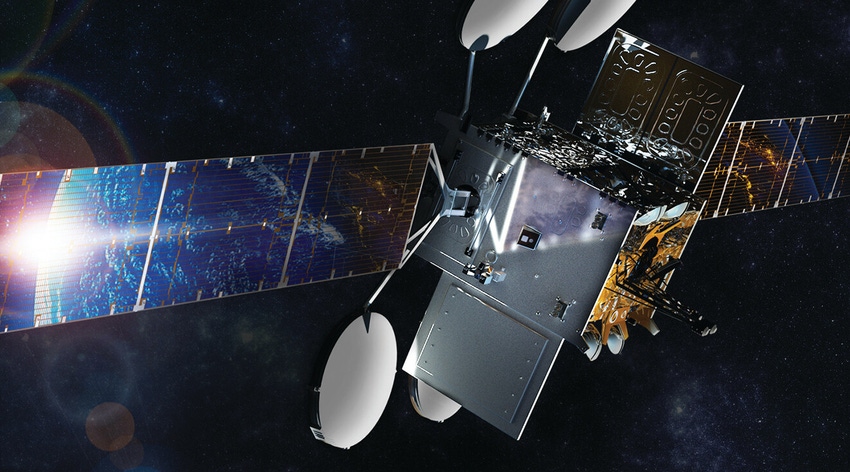Two of the oldest names in satellite connectivity are coming together to create a behemoth that can go toe-to-toe with the growing number of upstarts aiming for the stars.
November 9, 2021

Two of the oldest names in satellite connectivity are coming together to create a behemoth that can go toe-to-toe with the growing number of upstarts aiming for the stars.
US-based Viasat has agreed to acquire UK counterpart Inmarsat in a cash, stock and debt deal valued at $7.3 billion. The transaction comprises $850 million in cash, 46.36 million Viasat shares worth $3.1 billion at last Friday’s closing price, and the assumption of $3.4 billion of Inmarsat net debt.
In return for all that, Viasat gets to augment its fleet of geostationary (GEO) satellites with the 14 currently operated by Inmarsat, giving it a total of 19 in service, with 10 more under construction. As well as high-capacity Ka-band coverage, the combined entity will also be able to offer L-band coverage for reliable, narrowband IoT connectivity. Viasat will also take control of Inmarsat’s ground stations, and perhaps most importantly, customers, which include those in the media, aviation and maritime industries, enterprises and governments, among others.
“Inmarsat’s dual-band global mobile network, unique L-band resources, skills and capabilities in the UK and excellent technical and operational talent worldwide, are powerful complements to Viasat’s business. Together, we can advance broadband communications and create new hybrid space and terrestrial networks that drive greater performance, coverage, speed, reliability and value for customers,” said Viasat executive chairman Mark Dankberg, in a statement.
Presumably to assuage fears over yet another foreign takeover of a UK-based tech firm, Viasat insisted it remains committed to engaging with, and investing in the UK space sector.
“Joining with Viasat is the right combination for Inmarsat at the right time,” said Inmarsat CEO – and former Nokia CEO – Rajeev Suri. “The combination will create a strong future for Inmarsat and be well-positioned to offer greater choice for customers around the world, enhanced scope for partners and new opportunities for employees. The industrial logic is compelling and ensures that the UK has a strong and sustainable presence in the critical space sector for the long term.”
It isn’t yet clear whether Suri will keep his job. The deal is expected to close in the second half of 2022, and in the meantime Viasat expect’s Inmarsat’s management team to keep doing what they’re doing. Viasat said decisions about leadership will be taken after the deal closes as part of the integration planning process.
The merger comes at a time when the economics of satellite connectivity have the potential to alter considerably thanks to the current excitement about new low-Earth orbit (LEO) constellations. These satellites are smaller, relatively cheaper to produce, and cost less to put into orbit compared to higher-orbiting GEO satellites. Their proximity to Earth compared to GEO satellites means a strong signal can be maintained using less power, and latency is lower too.
There are downsides though. LEO satellites have a comparatively shorter lifespan, and typically have to be replaced after around five years. They orbit the Earth quickly, providing a limited window of coverage to a smaller area of the planet. Therefore, they have to hand off to other LEO satellites to maintain a connection, which adds to the complexity and therefore cost.
In addition, there are several players with an eye on the LEO market, including but not limited to SpaceX’s Starlink, OneWeb, and Amazon’s Project Kuiper. While this degree of competition is likely to result in some tantalisingly-affordable prices for customers, it is unclear whether this will be sustainable over the long-term.
There have already been some high-profile failures in the LEO market. LeoSat went kaput in late 2019 after failing to secure the investment needed to fund its operations. Aforementioned OneWeb is doing better now, but it burned through billions and needed rescuing by the UK government and Bharti Global to get back on track.
Given these minutiae, it is by no means certain that the traditional model for satcoms is obsolete.
Acquiring Inmarsat “gives Viasat the scale to increase the pace of innovation that drives new and better services for our customers, broadens the opportunities for our employees and provides a foundation for significant positive free cash flow, with potential upside from a revitalisation of L-band and IoT service growth,” said Viasat CEO Rick Baldridge. “Plus, we will have expanded scale and presence in the $1.6 trillion broadband and IoT sectors. I’m excited about the opportunities ahead and looking forward to setting up the combined organisation for long-term success.”
About the Author(s)
You May Also Like








.png?width=300&auto=webp&quality=80&disable=upscale)


_1.jpg?width=300&auto=webp&quality=80&disable=upscale)


.png?width=800&auto=webp&quality=80&disable=upscale)